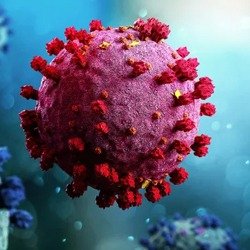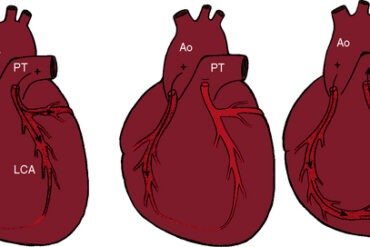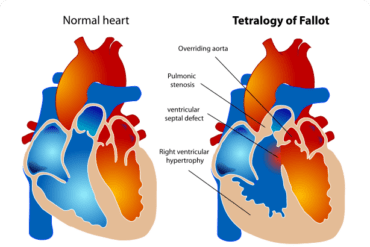Common Symptoms of Neonatal Hypertrophic Cardiomyopathy

Table of Contents
- Difficulty Breathing and Feeding
- Poor Growth and Development
- Abnormal Heart Murmurs
- Fatigue and Weakness
- Cyanosis and Pallor
Difficulty Breathing and Feeding
Neonatal Hypertrophic Cardiomyopathy (NHC) is a serious heart condition that affects infants. It is characterized by the thickening of the heart muscles, leading to difficulties in the heart’s ability to pump blood efficiently. This article will focus on one of the common symptoms of NHC – difficulty in breathing and feeding.
Infants with NHC often struggle with breathing and feeding due to the impaired functioning of their heart. Here are some key points to understand:
- Rapid Breathing: Babies with NHC might breathe faster than usual. You may notice their chest rapidly rising and falling with each breath.
- Shortness of Breath: These infants may experience difficulty catching their breath or seem to be constantly out of breath.
- Flaring Nostrils and Retractions: The baby’s nostrils might widen with each breath, and you may observe visible pulling of the chest muscles or the skin between the ribs during breathing.
In addition to breathing problems, feeding can also be a challenge for infants with NHC. The following signs may indicate feeding difficulties:
- Fatigue: Infants may appear tired or exhausted shortly after beginning a feeding.
- Poor Weight Gain: Due to difficulties in feeding, babies with NHC often struggle to gain weight and may even experience weight loss.
- Sweating: Sweating excessively during feeding can be a sign of increased effort to breathe and consume nourishment simultaneously.
- Irritability: Some babies with NHC become fussy or irritable during feeding, as they find it physically challenging and tiring.
If you notice any of these signs, it is crucial to consult a pediatrician immediately. Early detection and proper management of NHC are essential to ensure the best possible outcomes for these infants. Diagnostic tests such as echocardiography can help confirm the presence of NHC and guide appropriate treatment interventions.
Remember, recognizing the symptoms and seeking medical help promptly can make a significant difference in the health and well-being of infants with Neonatal Hypertrophic Cardiomyopathy.
Poor Growth and Development
Neonatal Hypertrophic Cardiomyopathy (NHCM) is a rare condition characterized by the thickening of the heart muscles in newborns. This abnormality affects the heart’s ability to pump blood effectively and can lead to various symptoms and complications.
One common symptom of NHCM is poor growth and development in affected infants. Due to the heart’s inability to function properly, the body may not receive an adequate supply of oxygen and nutrients. This can result in delayed physical growth and hinder the baby’s overall development.
Here are some key points to understand the impact of poor growth and development in neonates with NHCM:
- Delayed milestones: Infants with NHCM may experience delays in reaching developmental milestones, such as sitting, crawling, or walking. The weakened heart muscles restrict their physical abilities, making them lag behind their peers.
- Failure to thrive: Poor weight gain or failure to thrive is another common sign of NHCM. Babies may have difficulties nursing or feeding properly due to fatigue or shortness of breath caused by their heart condition.
- Weakened immune system: NHCM can weaken the immune system, making affected babies more vulnerable to infections and illnesses. Frequent illnesses and recurrent hospitalizations can further hinder an infant’s growth and development.
- Cognitive and motor development: Inadequate oxygen and nutrient supply to the brain can impact cognitive and motor skills development. Children with NHCM may face challenges in cognitive abilities, speech development, and motor coordination.
It is important for parents and healthcare providers to monitor the growth and development of infants diagnosed with NHCM closely. Early intervention, appropriate medical management, and timely therapeutic support can help mitigate some of the developmental delays associated with this condition.
In conclusion, poor growth and development are common symptoms in neonates with hypertrophic cardiomyopathy. It is crucial to raise awareness about this condition and ensure affected babies receive the necessary medical care and support to overcome developmental challenges.
Abnormal Heart Murmurs
Neonatal Hypertrophic Cardiomyopathy (NHCM) is a rare but serious condition that affects the heart muscles of newborns. One of the key symptoms of NHCM is the presence of abnormal heart murmurs. These murmurs can typically be detected during a routine physical examination of the infant’s chest.
Abnormal heart murmurs are sounds produced by turbulent blood flow within the heart. In the case of NHCM, the murmurs are often a result of the thickening of the heart muscles, which can disrupt the normal flow of blood through the chambers. This turbulent flow leads to the production of abnormal sounds that can be heard with a stethoscope.
Understanding the different characteristics of abnormal murmurs is crucial in diagnosing NHCM. Here are some common features of abnormal heart murmurs associated with neonatal hypertrophic cardiomyopathy:
- Loudness: The intensity of the murmur can vary, ranging from soft to very loud.
- Pitch: The pitch may vary, but high-pitched murmurs are often associated with NHCM.
- Timing: Abnormal murmurs may occur during specific phases of the cardiac cycle, such as systole or diastole.
- Location: The murmur’s location on the chest can provide important diagnostic clues, indicating the affected area of the heart.
- Radiation: Some murmurs may radiate to other areas of the chest or back, indicating the extent of the abnormal blood flow.
- Accompanying Symptoms: In addition to abnormal murmurs, infants with NHCM may exhibit symptoms like rapid breathing, poor feeding, and failure to thrive.
If your healthcare provider detects any abnormal heart sounds during a newborn examination, they may refer your baby to a pediatric cardiologist for further evaluation. Additional tests, such as an echocardiogram, will be recommended to confirm the diagnosis of NHCM.
It is important to remember that not all heart murmurs are indicative of NHCM or other heart conditions. While abnormal murmurs should be taken seriously, they can also be caused by benign factors or other unrelated medical issues. Prompt medical assessment and appropriate management play a vital role in ensuring the well-being of infants with heart murmurs.
Fatigue and Weakness
One of the common symptoms observed in neonatal hypertrophic cardiomyopathy (NHCM) is fatigue and weakness. It is important for parents and caregivers to be aware of these signs as they can indicate underlying heart problems in newborns.
NHCM is a condition in which the heart muscles become thickened, making it difficult for the heart to pump blood effectively. This can cause a variety of symptoms, including fatigue and weakness, in the affected newborns.
Here are some key points to understand about fatigue and weakness in neonatal hypertrophic cardiomyopathy:
- Neonates with NHCM may appear unusually tired or fatigued. They may seem lethargic, sleep more than usual, or have difficulty staying awake.
- Weakness can be observed in the baby’s body, making them unable to exert normal strength.
- Lack of energy may affect feeding patterns, leading to poor appetite or difficulty in sucking during breastfeeding or bottle-feeding.
- Due to inadequate blood circulation, the baby may struggle to gain weight and may show poor growth and development.
- These symptoms of fatigue and weakness in NHCM may worsen with physical activity, indicating a reduced tolerance for exertion.
If you notice these signs in your newborn, it is crucial to seek medical attention promptly. A pediatrician or a pediatric cardiologist can evaluate the baby’s condition and conduct necessary tests to diagnose NHCM.
Early detection and treatment are essential to manage neonatal hypertrophic cardiomyopathy effectively. The medical professionals may recommend medications, lifestyle modifications, and close monitoring to ensure the baby’s heart functions optimally.
By being vigilant about the symptoms of fatigue and weakness, parents and caregivers can help in the early identification and management of NHCM, ensuring the best possible outcome for the newborn affected by this condition.
Cyanosis and Pallor
Neonatal hypertrophic cardiomyopathy is a serious condition that affects the heart muscle of infants. It can cause various symptoms, including cyanosis and pallor. These symptoms are indicative of poor oxygenation and blood circulation, leading to a bluish discoloration of the skin (cyanosis) and paleness (pallor).
1. Cyanosis: Infants with hypertrophic cardiomyopathy may experience cyanosis, primarily in the extremities such as fingers and toes. The reduced ability of the heart to pump blood efficiently can lead to insufficient oxygen delivery throughout the body. This oxygen deprivation causes a bluish tint to the skin, indicating a lack of oxygen-rich blood.
2. Pallor: Pallor is another common symptom in neonates with hypertrophic cardiomyopathy. The weakened heart muscle cannot adequately pump blood to nourish the body’s tissues, resulting in a reduced blood supply. Consequently, the skin appears pale or whitish due to decreased blood flow.
It is crucial to monitor infants for these symptoms, as they can be early warning signs of neonatal hypertrophic cardiomyopathy. Seeking immediate medical attention is vital if cyanosis or pallor is observed in newborns.
Additionally, parents and caregivers should be aware of other potential signs and symptoms, including:
- Rapid breathing (tachypnea)
- Poor feeding and inadequate weight gain
- Irritability or excessive sleepiness
- Excessive sweating
- Difficulty in breathing or breathlessness
- Failure to thrive
Early detection and timely intervention can significantly improve the prognosis for infants with hypertrophic cardiomyopathy. If any of these symptoms are observed, it is crucial to consult a healthcare professional who specializes in pediatric cardiology for accurate diagnosis and appropriate treatment.
Remember, immediate medical attention is of utmost importance when it comes to neonatal hypertrophic cardiomyopathy. Don’t hesitate to seek help if you notice cyanosis, pallor, or any other concerning symptoms in your newborn.


























